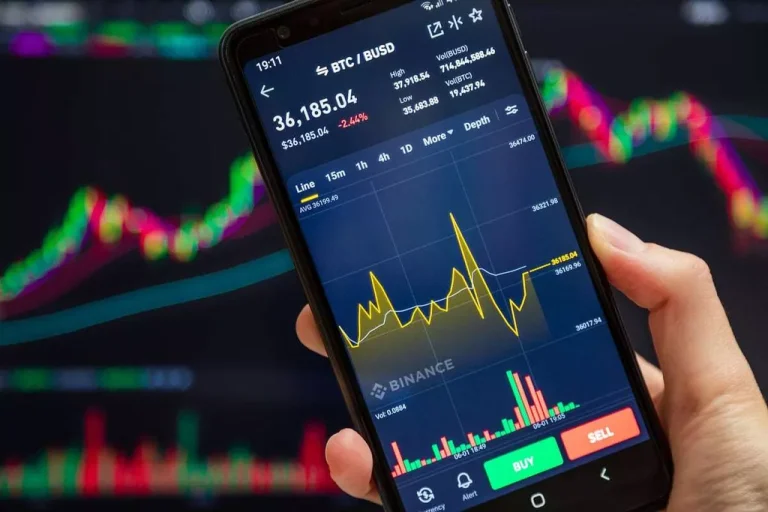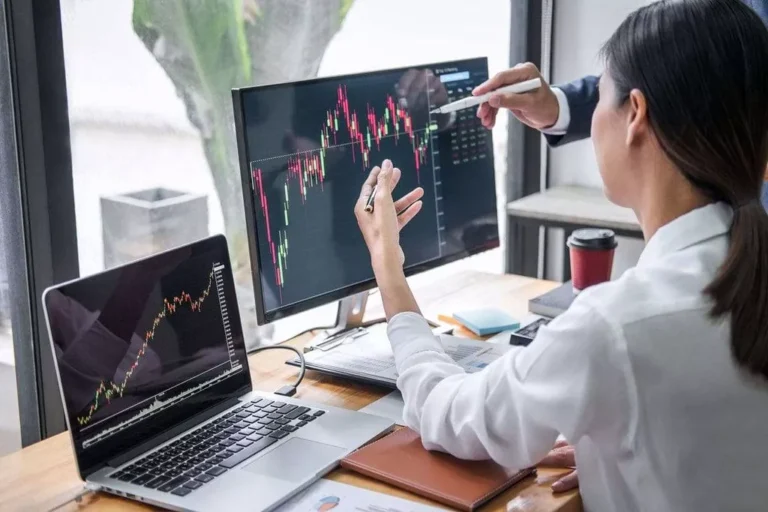Forex traders utilize volatility as a key factor in making buying and selling selections by incorporating it into their buying and selling methods and threat administration. Traders attempt to understand when volatility will increase or lower within the foreign exchange market to switch their buying and selling Non-fungible token positions for the expected volatility impacts and avoid unpredictable market situations. Garman-Klass volatility is a measure of historical volatility based mostly on an asset’s open, excessive, low, and shut costs. Traders calculate Parkinson volatility by discovering the difference between the best and lowest prices, dividing it by two, and then taking the natural log and raising it to the ability of two. Add the outcomes over the noticed collection; the answer is the estimate of the usual deviation of the every day log returns. A excessive value indicates excessive asset volatility, whereas low values point out stable market situations.
Which Of Those Is Most Essential In Your Financial Advisor To Have?
Market volatility is measured by finding the usual deviation of worth changes over a period of time. The statistical concept of a normal deviation lets you see how a lot one thing differs from a mean worth. The difference between volatility and liquidity lies within the features of the market they measure. Volatility prediction models https://www.xcritical.in/ do not reveal the direction of price swings in unstable markets, solely the magnitude of the fluctuations. Technical evaluation tools like Average True Range (ATR) and Volatility Index (VIX) enable merchants to evaluate current volatility levels and predict potential worth modifications with relatively excessive accuracy.
Is Volatility The Same As A Risk?
MarketBeat keeps monitor of Wall Street’s top-rated and finest performing research analysts and the stocks they advocate to their clients every day. Central banks around the world use rates of interest crypto volatility index as a device to either stimulate economic progress or curb inflation. A change, or even the anticipation of a change, in these rates, can have profound impacts on everything from bond yields to stock valuations. Volatility is a time period that echoes often in the corridors of finance, from boardrooms to buying and selling floors. Our mission is to empower readers with essentially the most factual and dependable monetary info potential to help them make knowledgeable selections for his or her individual needs.

Defining Volatility In Easy Terms
In durations of excessive volatility, buyers may modify their portfolios to mitigate danger by rebalancing, diversifying, or using hedging methods. When buyers are optimistic, they have an inclination to purchase more assets, pushing costs larger. Economic indicators, corresponding to GDP progress, unemployment charges, and consumer spending, can influence market volatility.
Discover Wealth Management Solutions Near You
Standard deviation is a statistical measure that gives an perception into the typical variance from an funding’s imply return. In the realm of finance, it’s generally used to gauge an investment’s volatility. Economic indicators corresponding to inflation rates, unemployment figures, and GDP progress can significantly affect the volatility of monetary markets.
“While it’s tempting to give in to that concern, I would encourage people to stay calm. Because market volatility can cause sharp adjustments in funding values, it’s potential your asset allocation could drift out of your desired divisions after periods of intense adjustments in either direction. That stated, let’s revisit standard deviations as they apply to market volatility. Traders calculate standard deviations of market values primarily based on end-of-day buying and selling values, adjustments to values inside a trading session—intraday volatility—or projected future changes in values. Novice forex merchants look for durations of consolidation or low volatility out there and craft methods based mostly on a volatility breakout. Chart instruments like rectangles, triangles, and trendlines help merchants establish frequent chart patterns that signify potential risky breakouts from tight trading ranges or the beginning of a model new risky development.
Trades look to liquidity to determine their ability to execute trades successfully and think about volatility when assessing their risk and potential returns. Economic indicators and information releases similar to employment information and inflation stories or geopolitical developments like elections and wars are key volatility indicators. Traders anticipate rising market volatility throughout news releases and scheduled announcements and use statistical models to estimate the potential influence of the volatility on market prices. An example of volatility in the stock market occurred in the course of the 2008 global monetary disaster when the S&P 500 fell over 57% after the collapse of the Lehman Brothers and the subprime mortgage crisis unfolded.
High volatility can lead to bigger price swings, while low volatility signifies more steady and predictable worth actions. By grasping the idea of market volatility, traders can make more informed choices and develop strategies to manage threat effectively. Since making money is intently linked with value changes, volatility can be perceived as a boon to speculators. The distinction between volatility and liquidity lies of their distinct traits and results on financial markets. Traders and investors calculate market volatility by accumulating historic knowledge about an asset and calculating its variance and standard deviation. An instance of volatility in the market contains the 2008 financial crisis, when the mortgage bubble burst, triggering large volatility in monetary markets globally.
This and other data can be discovered in the Funds’ prospectuses or, if out there, the summary prospectuses, which may be obtained by visiting the iShares Fund and BlackRock Fund prospectus pages. Discover how value investing seeks to buy stocks that are low-cost relative to their fundamentals primarily based on quite so much of monetary metrics. It is based on projections and should be used as a information somewhat than a forecast of future efficiency. High volatility could cause shoppers and companies to turn out to be extra cautious in their spending and funding choices, doubtlessly slowing financial growth. Conversely, when investors are pessimistic, they could sell their holdings, inflicting costs to fall. Geopolitical events, similar to wars, terrorist assaults, or diplomatic tensions, can considerably impression market volatility.
Changes to tax laws, reports on unemployment and inflation, and bulletins regarding buyer spending can all enhance volatility. Of course, when there’s a change in authorities, it leaves investors with uncertainty. Even if there are not any elections or new officers, there could presumably be modifications in overseas or domestic insurance policies that could go away investors uncertain of what’s to come back and the way they will be affected.
Banks and other monetary establishments cut back on their lending in unstable market conditions, decreasing buying and selling exercise (liquidity risk) and increasing the danger of debt default amongst debtors (credit risk). Implied volatility (IV) measures the longer term volatility of an asset derived from the present price of an option contract for the underlying asset. Implied volatility reveals the projected price fluctuations of an asset over the life of the option contract, usually a few weeks to months. Forex merchants incorporate market volatility into their trading methods as confirmations that present clues on the optimal entry and exit factors.

Bad price order fills are frequent in unstable markets since the new long or quick orders move costs from the present market price level, and market makers execute them on the next out there worth. Yes, high volatility causes slippage to occur in monetary markets as a result of the speedy and unpredictable price actions result in order execution delays. Volatility contributes to imbalanced market liquidity, making it tough for commerce orders to search out counterparties since fewer consumers and sellers are prepared to participate out there. Slippage happens when commerce orders are stuffed at totally different costs from the supposed execution worth levels. Traders consider volatility when setting stop-loss and take-profit ranges to accommodate potential spikes in volatile markets and keep away from untimely triggering. High volatility prompts forex merchants to cut back their place sizes to reduce potential losses, whereas low volatility encourages merchants to increase their positions to seize more income.
In determining the pricing of options contracts, implied volatility is an important measure. Analysts consider in quite a lot of elements when forecasting future value changes in assets. Although it’s introduced in percentages, implied volatility doesn’t point out which method prices will go. Historical volatility uses the usual deviation of the log of the ratio of consecutive market closings over a defined period of time.
- It is commonly measured by calculating the standard deviation or common true range of worth changes and serves as an indicator of the inherent danger, uncertainty, and instability in market situations.
- Contrarian investors seek to profit from market volatility by buying property when costs are low and promoting when prices are high.
- The volatility alerts on some broker platforms notify traders when volatility reaches sure ranges, making it easier to take trades using volatility-based strategies.
- For firms with stable fundamentals, high volatility may just imply that the inventory is actively adjusting to growth expectations rather than signaling a downturn.
High volatility typically will get a bad status, as it’s seen as a sign of instability. It can mirror strong investor curiosity, both shopping for and selling, which generally leads to larger returns in the long run. For firms with solid fundamentals, excessive volatility may imply that the stock is actively adjusting to progress expectations quite than signaling a downturn. Beta is a metric that compares an asset’s volatility to the overall market’s volatility, typically using the S&P 500 index as a reference. For example, a beta of 1.5 suggests that the stock might transfer 1.5 times the magnitude of the market’s actions.
